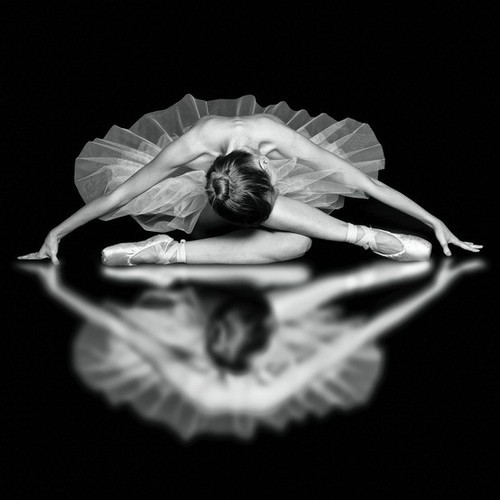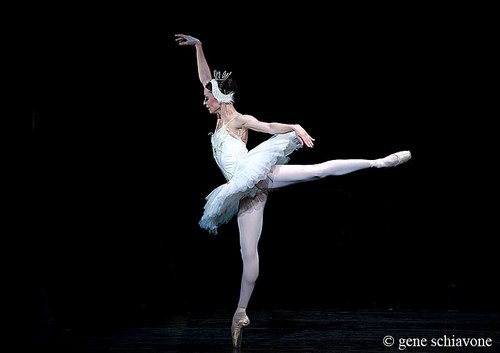Recently I have taken on teaching three one hour mat Pilates classes a week while the regular instructor is on a break. I'm grateful for the opportunity, especially since Pilates is somewhat in my wheelhouse and the classes are scheduled during school hours. Working three evenings a week as it is is enough for me and my family.
Outside of subbing mat Pilates on and off over the last year and a half I haven't really been doing classes that much. I sort of forgot how intense mat Pilates can be. How it can encompass the whole body. There are even movements that focus on upper body strength and form.
Mat Pilates ties in very nicely to some of the other formats that I teach; classical ballet technique and Balletone (a combination of fitness, ballet technique, yoga inspired movements and pilates).
One of the things that I love about Balletone is the teaching methodology that is an important part of the program. One major aspect of the methodology is placing focus on a specific part of a movement in a series of movements. It might be the quality of the movement (sharp or slow) or range of movement (low or wide) or applying extra focus on something technical. As was the case in what I focused on last week through much of what I taught.
The relationship between the rib cage and the shoulders as well as the center or what I like to refer to as the plum line of the body.
For Balletone I cued throughout the various movements for my students to imagine the muscles of the rib cage wrapping around the front of the ribs. Much like a corset. Then to imagine the shoulders as the plunger handle for a TNT detonator.

I know it sounds kind of crazy, but I'm really into visuals. Sometimes the more cartoony the better.
Just think about it, a plunger on a detonator has a certain amount of resistance or hydraulics to it. It's that feeling I'm trying to illustrate. A controlled amount of downward pressure in conjunction with the wrapping of the rib cage muscles. Then, while all that is going on, think about the plum line of the body as a pole drilling up through the center of the body to the sky.
There is the wrapping of the ribs coming in from the sides, the sustained downward pressure or resistance of the shoulder complex, and then the ascending energy of the plum line "pole".
By shifting the focus to this trio of muscle controls on the posture of the body revealed new layers to movements we had done many times before in Balletone.
For one of the mat Pilates classes I wanted to apply this trio to breaking down the Pilates neck pull exercise.
I have done the neck pull a few times in the past. It is a rather advanced move, that despite its name, does not involve any pulling on the neck. Rather a sustained amount of pressure of the interwoven fingers against the back of the skull to create a lengthening effect.
I was a little intimidated to whip it out, so I made sure to prepare modifications for participants who were not quite ready for the full neck pull. I wanted to make sure everyone had something to work on. I also included builder exercises in the warm up that would pertain to the actual neck pull exercise.
When applying the rib cage/shoulder press-down/plum line lengthening, well, it made the exercise pretty intense. At least I thought so.
One long time student of Pilates mentioned after class that while doing the side line (a set of exercises done while balancing on the side of the body) portion of the class she felt exhausted. She usually found the side line portion of class very doable, but that day's class was really giving her run for her money. Aha! One of the great things about shifting the focus to a specific part of the body. Breaking out of the norm every now and again;
When shifting intense focus to just one or two parts of the body, other parts fire up in ways you never thought possible. Example; focusing on the rib wrap and shoulder set through various exercises made it less noticeable that the glutes and quads were working like crazy to support what you were asking of the ribs and shoulders. This becomes especially apparent when you shift back to focusing on what you would normally focus on. The muscles of the legs were probably working much harder and in a different way when we had our focus on the ribs and shoulders.
One of the first things I fell in love with about Pilates is that once you concur one challenge there is another one eagerly awaiting your efforts. Ballet technique is very similar. There is always something to improve upon. Pilates and ballet technique can often be like peeling back the layers of an infinity onion. No matter how many layers you peel back there is another one waiting to be peeled. And they might make you cry.
Simple exercise to engage the rib wrap/ shoulder press.
Start by laying on your back on the floor, using a mat if you need extra cushioning. Knees bent, feet flat on the floor, legs hips width apart. Make sure hips, knees and ankles are all tracking.
Inhale. As you exhale feel the front of the ribs knit together as you pull the belly button towards the spine. Repeat 2-3 more times.
Next, inhale. As you exhale feel the backs of the shoulder blades slide down the back, as if you are trying to slide them into your back pockets. Repeat 2-3 more times.
Finally, inhale. As you exhale combine the rib wrap/shoulder press down as you pull the belly button towards the spine. Repeat 2-3 more times.
You can challenge this in a sitting position and while standing with feet in parallel.
Thanks for hanging out.
Enjoy the dance that is life!
~Erin.










